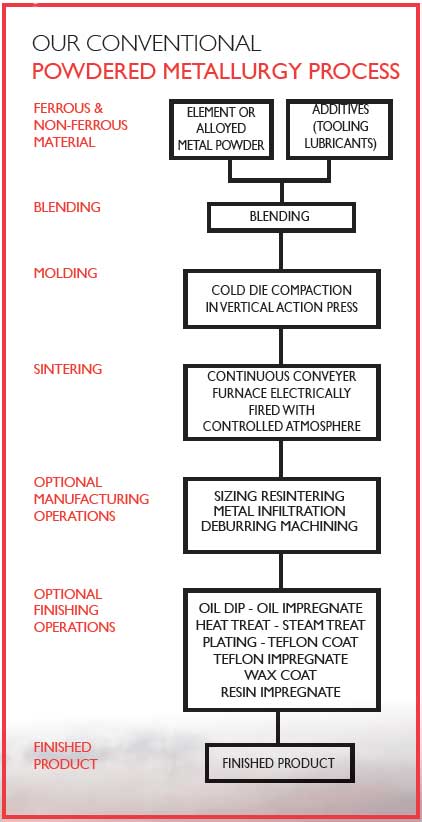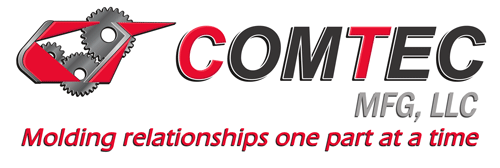Conventional Powdered Metal Process

The powder metal or sinter metal process is an economical, environmentally clean, high production method for making parts exactly to or close to final dimensions with little or no machining operations required. With powder metal, it is possible to size, coin, or repress parts to close tolerance. Due to their porosity, they may be impregnated with oil or plastic.
Powder metal parts are created through powder metallurgy (P/M). During this manufacturing process, solid ferrous and nonferrous metal parts are created from metal powder.
Metals are first reduced to individual particles through methods including atomization, chemical precipitation, comminution and hydrogen reduction.
The resulting powders are impregnated with lubricant. Then, they are compacted in a die cavity at ambient temperature, after which they are in a near net state, or “green state.”
Finally, the green parts are sintered in a furnace at temperatures below the melting point of the metal to bond the particles without changing the shape of the part.
The sintering process also increases part strength and controls the porosity of the part. Although the finished parts look solid, they actually consist of small interconnected capillaries, which cause the parts to be approximately 25% porous.
Secondary operations and optional processes include sizing, deburring, heat or steam treating, machining , plating or oil/plastic resin impregnation.
COMTEC® has in-house CNC machining capabilities for milling, turning, drilling, tapping and facing.

